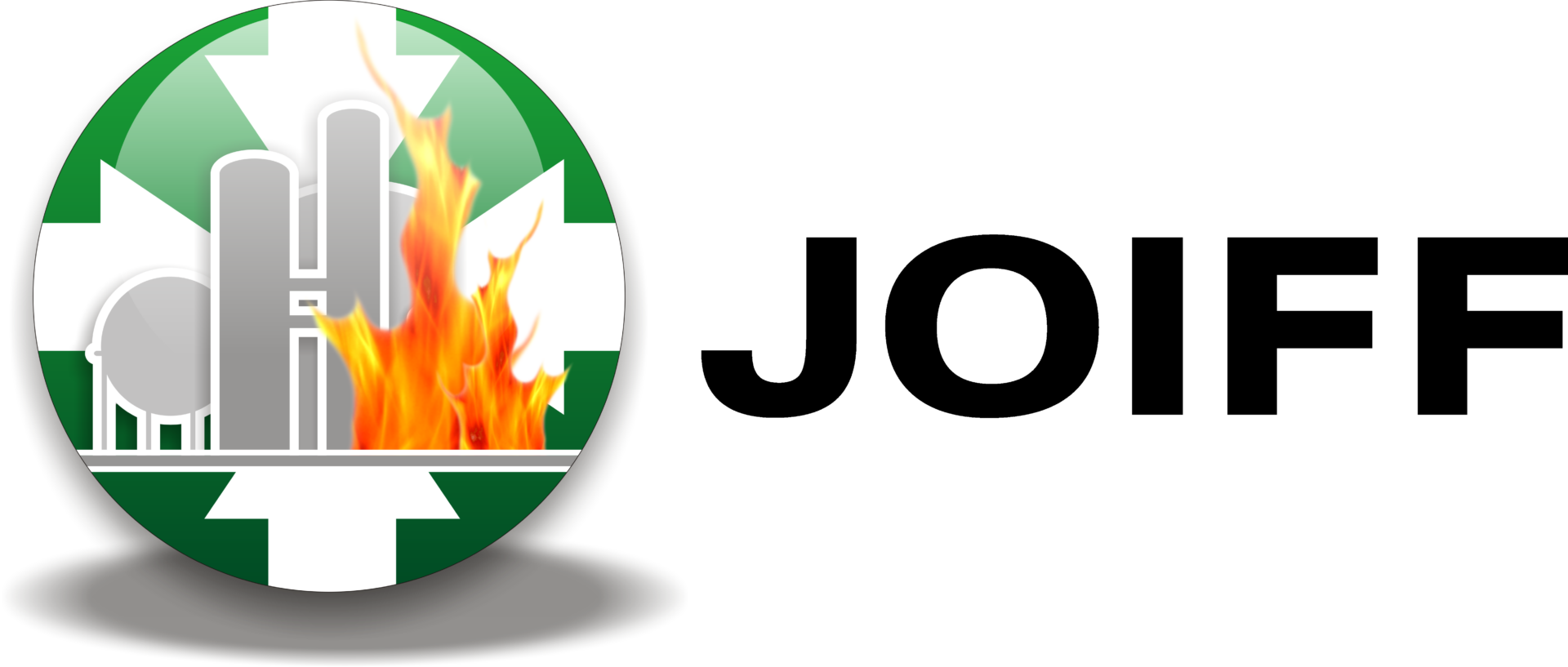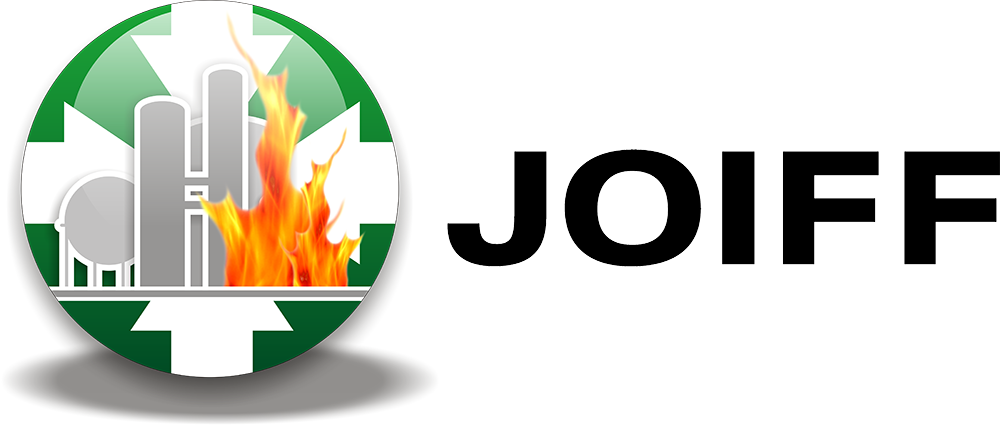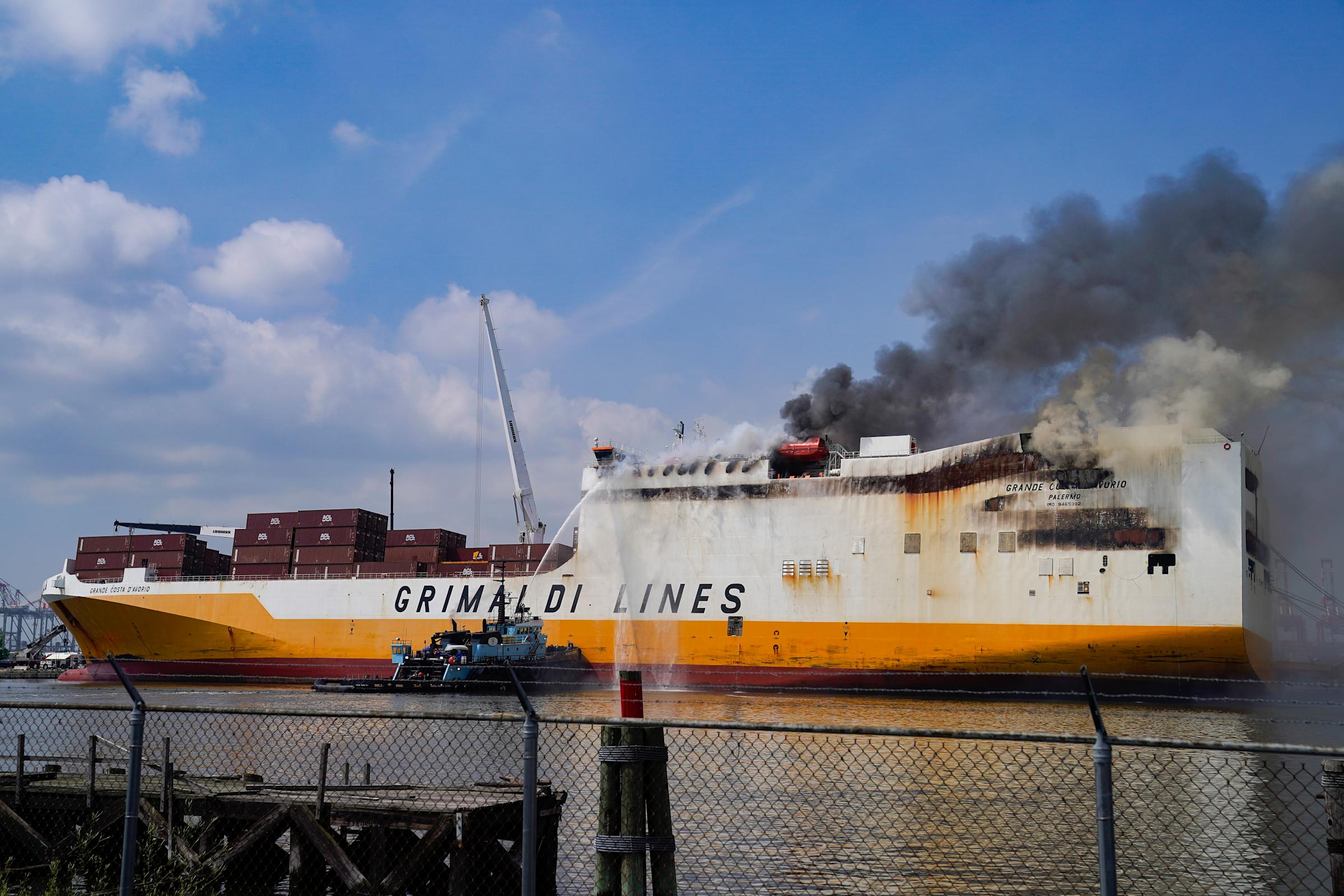NTSB: Firefighters Should Not Have Entered Burning Grande Costa D’Avorio
The National Transportation Safety Board (NTSB) has concluded its investigation into the 2023 fire aboard the Grande Costa D’Avorio, a roll-on/roll-off (ro/ro) vessel that caught fire while docked in Newark, New Jersey. The final report, approved during a public hearing on Tuesday, highlighted a chain of failures and misjudgments that culminated in a prolonged blaze and the tragic loss of two firefighters.
How the Fire Started
The fire originated in a Jeep Wrangler being used as a “pusher” vehicle to help move inoperable cars into the ship’s interior ramps. This was the 38th such operation the longshoreman had conducted that day. Midway through the push, he heard a loud noise and saw flames dripping from under the Jeep.
According to investigators, the Jeep overheated under conditions far more intense than those for which it was designed. Although the vehicle had undergone a safety recall related to transmission overheating during off-road use, the modifications only included a dashboard warning light and audible alarm—without any automatic shutoff. Under the extreme demands of continuous pushing, the vehicle’s transmission fluid boiled over, contacting hot surfaces and igniting.
Operational Context
The Grande Costa D’Avorio, operated by Grimaldi Lines, was loading 920 used vehicles for export to Africa. This included “non-runners”—cars that couldn’t move under their own power—and severely damaged “forklift” vehicles. Ports America, the terminal operator, had adopted the practice of using standard passenger vehicles like the Wrangler to push non-operational cars up the vessel’s ramps, despite the strain placed on such vehicles.
The NTSB determined that this industrial use of consumer-grade vehicles, particularly one already flagged for fire risk under stress, was inappropriate and directly led to the incident.
Crew Response and Safety Failures
After the fire broke out, crew members attempted to extinguish the flames, but the effort failed. The ship’s automated fire alarm was triggered, and 22 minutes later, the captain ordered the affected compartment to be sealed and the CO2 fire suppression system activated.
However, the garage door on Deck 12—crucial for sealing off the area—could not be closed from the outside due to a lack of external controls. This forced the crew into a no-win scenario: to close the door, someone would have had to remain inside the burning compartment. The captain, deeming this too dangerous, chose to release the CO2 with the door open.
A later analysis by the Bureau of Alcohol, Tobacco, Firearms and Explosives (ATF) found that had the door been closed, the CO2 would likely have suppressed the fire effectively. The NTSB also flagged the lack of exterior door control as a SOLAS violation, although the ship’s classification society had previously approved the configuration, citing that the door typically remains closed at sea.
Fire Department Intervention and Loss of Life
When local firefighters arrived, the incident commander ordered crews into the compartment to fight the fire, unaware that the CO2 system had already been activated. Opening and closing hatches during this response diluted the CO2, reducing its effectiveness and introducing oxygen, which intensified the flames.
Tragically, two firefighters went missing inside the smoke-filled space. A search and rescue operation was initiated, during which the ship’s ventilation system was turned on to clear smoke—further compromising the CO2 environment. The two firefighters later died, and the fire continued to burn for several days.
The NTSB found that the local fire department lacked recent marine firefighting training and was unfamiliar with the ship’s fire control systems. The failure to communicate that the CO2 system had been used, along with poor compartment control, significantly contributed to the severity of the incident.
Conclusions and Recommendations
The NTSB concluded that the fire was preventable and that the use of an ordinary Jeep as a pusher vehicle was inappropriate and dangerous. Investigators strongly criticized the decision to enter a space that had been flooded with CO2, calling it a fatal misjudgment based on inadequate training and communication.
“The best method to extinguish that fire was to work with the crew to close the Deck 12 door and allow the CO2 to function,” said NTSB investigator Bart Barnum.
In its recommendations, the NTSB urged the American Association of Port Authorities (AAPA) to warn port operators about the risks of using consumer vehicles for industrial tasks. The board also called on port authorities to support firefighter training in vessel systems and marine firefighting procedures.
Finally, the agency recommended that the ship’s classification society revise its guidelines to ensure SOLAS-compliant fire doors can be operated from both sides.
Photo credit: John Minchillo. All rights reserved.


